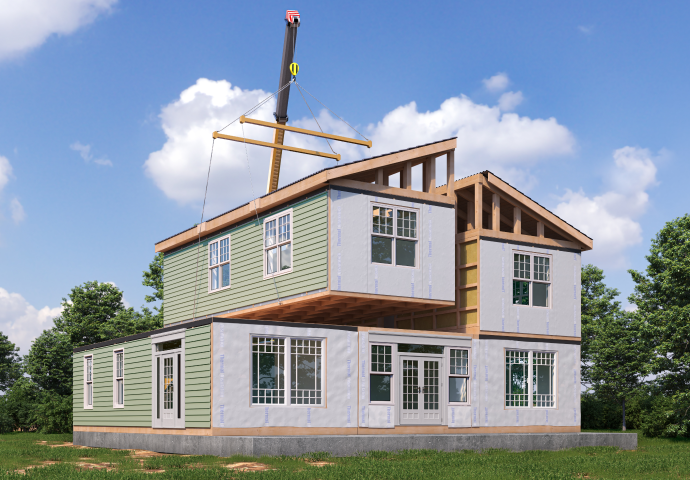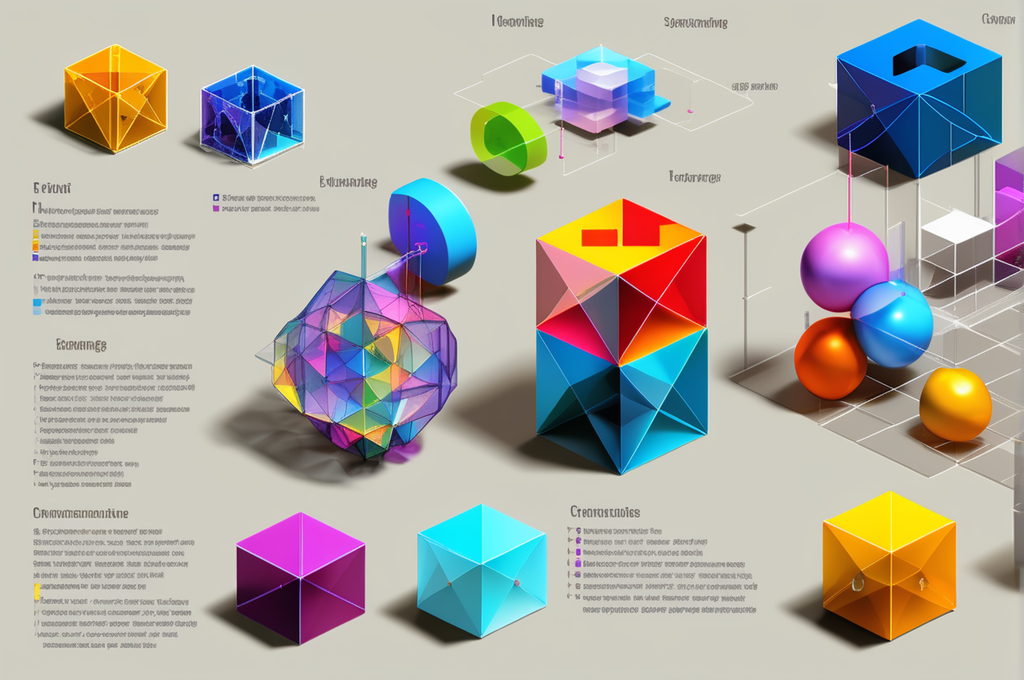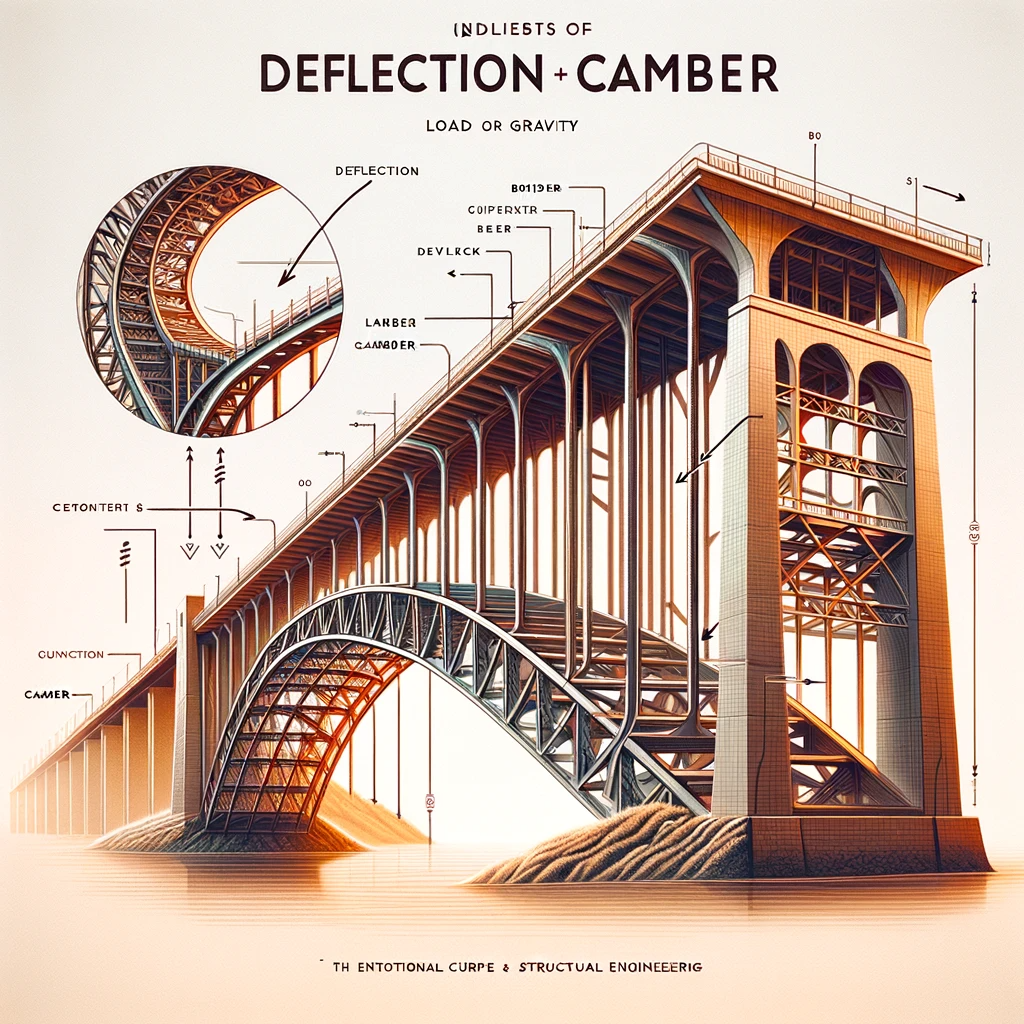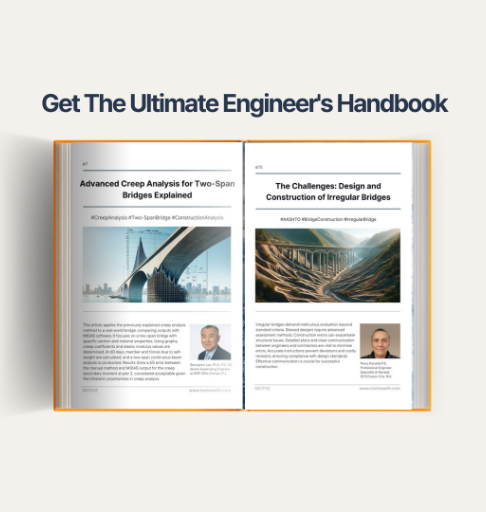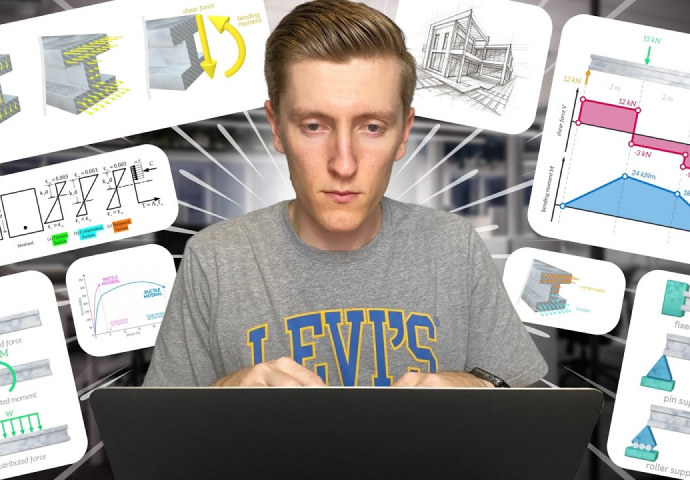Introduction
In this content, a graduate structural engineer named Ben Hielscher, shares his insights on how he would go about learning structural engineering from the ground up. For context, he has been in the engineering world for a little over five years now and currently works at a mid-size structural engineering firm. While he was at Uni, he did two internships, one at a small company and the other at a large one. Also, he ended up graduating with class one honors and the university medal for academic achievement.
He introduces the structural engineering roadmap, which covers all the important aspects that he believes you should focus on while you're at university. This content focuses on the "theoretical" section of the roadmap. Please refer to the section 'Keep exploring engineering ideas' for the remaining parts.
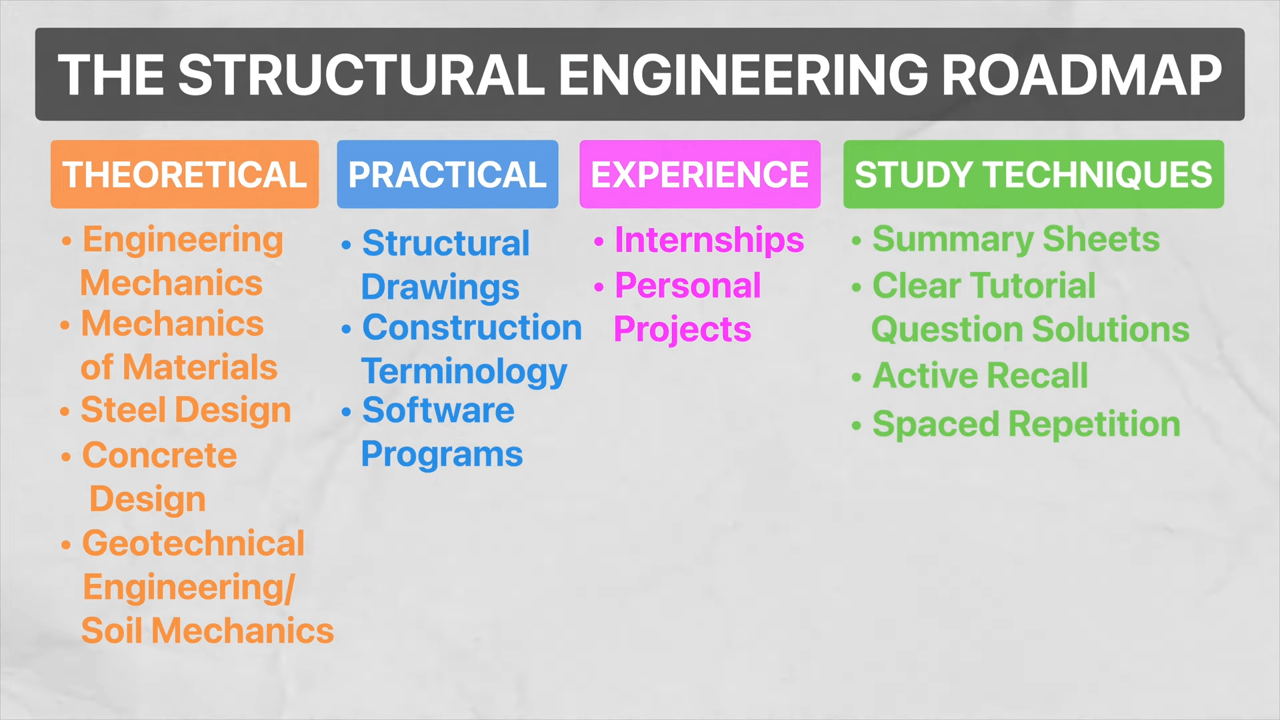 The structural engineering roadmap (Source : Ben Hielscher)
The structural engineering roadmap (Source : Ben Hielscher)
1. Engineering Mechanics
Here, he would focus on mastering things like solving free body diagrams, drawing bending moment diagrams, force diagrams, and also how to find and calculate material properties like the center of gravity and the second moment of area. Also, another thing that's important to learn here is the analysis of trusses, of which there are two ways: the method of joints and the method of sections.

2. Mechanics of Materials
Similar to engineering mechanics, this is all about mastering the fundamentals. Here, he would spend his time learning about material properties like the modulus of elasticity and how to calculate the section modulus. He would also spend his time understanding beam deflection and what factors affect how much a beam deflects. And finally, he would learn about how the flexure formula works.

After understanding the fundamentals of engineering so far, it is now important to apply them to actual designs.
3. Steel Design
Steel design is usually the first design course that you take at Uni, so in this course, you finally get exposed to the concept of load takedowns, which is a huge part of the job as a structural engineer. A load takedown is basically the process of estimating the magnitude of all the different loads that act on an individual member. So, this means that you learn how to calculate wind loads, dead loads, live loads, earthquake loads, and maybe even snow. You'll learn how to calculate a member's tributary area, so you can apply the correct amount of loading. After this, you can learn how to design common steel members like rafters, beams, columns, struts, and bracing. Now, designing steel members is something that you're going to do on a weekly basis when you're a graduate structural engineer, so make sure once you've got this skill that you maintain it throughout your studies.

4. Concrete Design
Here, you'll learn how to design and analyze reinforced concrete beams, slabs, walls, and columns, and depending on your uni, you'll also learn about prestressed concrete. In his opinion, concrete design is probably one of the most intricate and technically challenging courses that you take while you're a student, but the concepts are really important to understand. So if you are able to grasp them while you're a student, you will be really well prepared to start working as a design engineer.

5. Geotechnical Engineering and Soil Mechanics
The last thing he's added to the theoretical column is Geotechnical engineering, or soil mechanics. Geotechnical engineering and soil mechanics are fields that are important to understand in structural engineering as well. The types of things that he would pay attention to here are allowable bearing pressure calculations, soil types and properties, and also lateral earth and hydrostatic pressure calculations for retaining wall design.
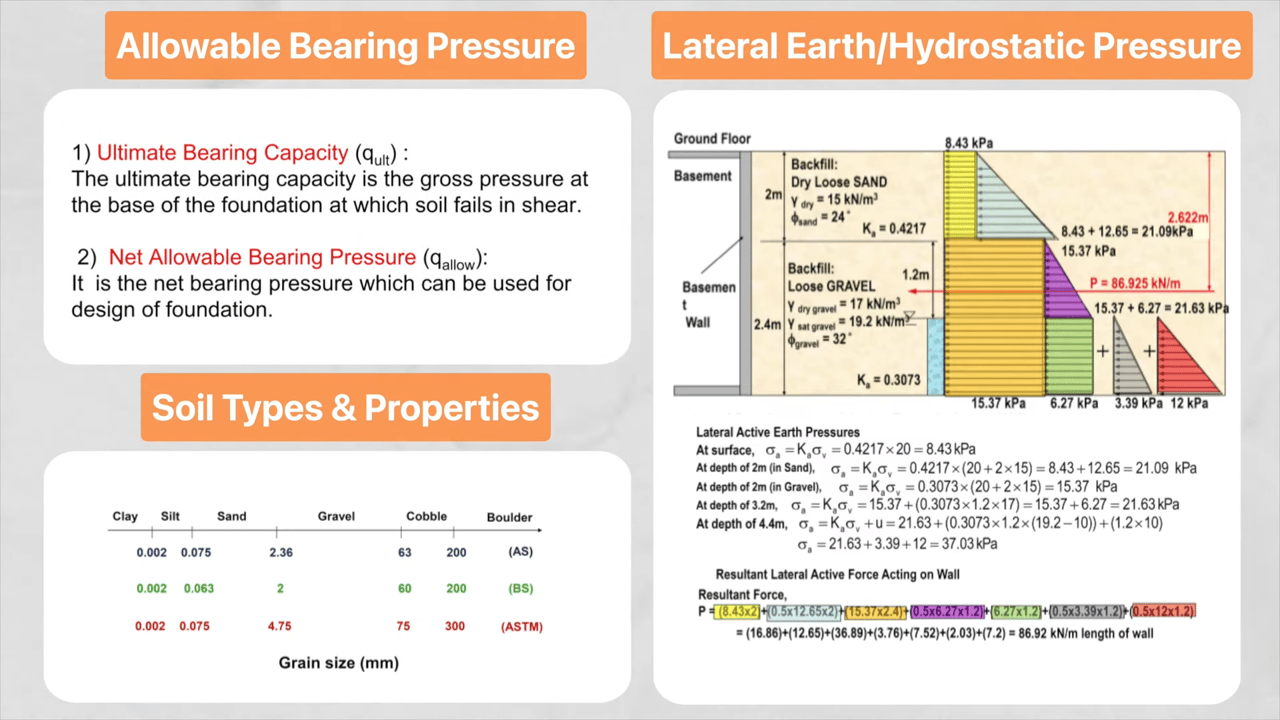
Tip: Don’t spend too much time on solving things using first principles.
Now, apart from the basics that he's already mentioned, he would not spend any more time than necessary to pass exams. Though it is important to understand first principles, don’t spend too much time on solving things using first principles. Because none of this is actually useful after graduation, as all of these things have now been programmed into software. For example, once you're a working engineer, you're never going to find the deflection of a beam by determining its elastic curve, because this involves doing a long winter calculation that has calculus and algebra in it. Instead, you put the beam and its loads into a structural analysis program and then get the result this way, with a lot less effort and a lot less margin for error.
For the remaining parts, please refer to the section 'Keep exploring engineering ideas' for further details.
Reference
This content is based on Ben Hielscher's YouTube video, you can watch MOTIVATOR's original video titled "How I Would Learn Structural Engineering If I Could Start Over" for more insights.
Youtube : How I Would Learn Structural Engineering If I Could Start Over
Topics
#Structural engineering
#Ben Hielscher
#Motivations
/Ben%20Hielscher%20320_320.png)
I’m Ben, a structural engineer. I make videos about tech, engineering, productivity and self-development. If you want to get in touch with me, please leave a comment on any of my videos, or for anything business related, send me an email.
Those who are interested, please feel free to visit my YouTube channel.

